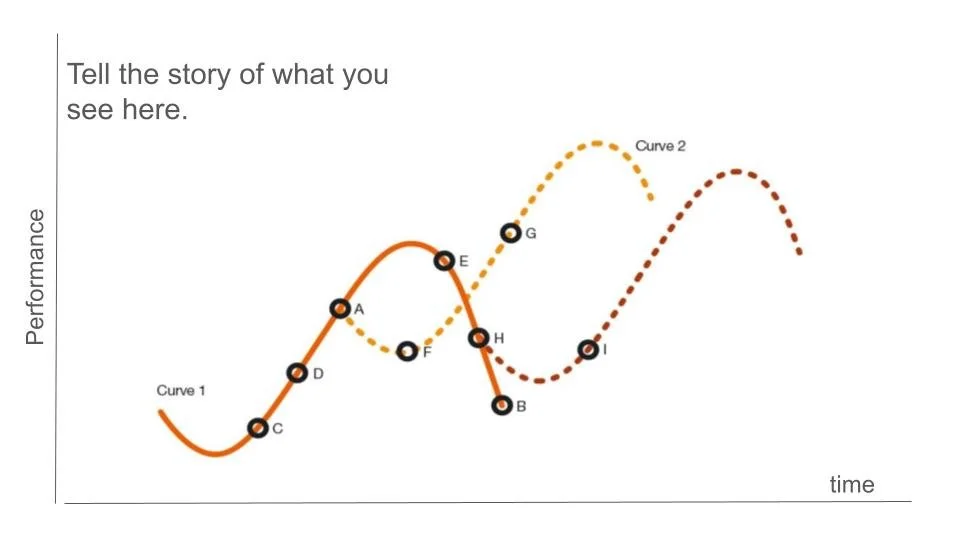Journal entry:
Is my management team stable, aware of policy and new research and guidance, and moving with a clear direction? Is succession planning necessary and if so, in place?
We’ve all heard of the concept of impostor syndrome. If you feel it, please don't worry in the slightest. It is sensible to always be suspicious of those who crave, dream of - or worse, expect - positions of leadership.
The reasons behind such ambition are often questionable - more money; the need to satisfy the expectations of others; a sense of entitlement or superiority or need to act out authority. None of these are qualities required to lead a team effectively and sustainably through the execution of a shared warmth, accountability and purpose (three things that do not always go hand-in-hand).
Indeed, it is my philosophy that the most effective headteachers are those who create a team of leaders - each far better at their role than the head themselves. Although this quickly leads to unnerving feelings that one is surplus to requirements, there is a true sense of satisfaction and accomplishment to such an approach, as well as a security and assuredness within that leadership team, were any one of them, particularly the Head to not be available.
Every one of the current Senior Academic Management team and Business Management team at Cransley - except maybe two - were persuaded and promoted because, whilst they were already had the potential to lead others in their field, they hadn’t recognised it in themselves. They required only the opportunity to build experience and dedicated training or coaching to become leaders.
Mrs Clare Lancaster had been an experienced Geography teacher for many years at Cransley, but was persuaded by my predecessor Simon Leyshon to take the role as ‘Head of Faculty’ - a rather functional title tenuously grouping half of the subjects teachers. Deputy headship came in temporary form, by abhorring the vacuum left by the long-term absence of my previous Deputy (someone I employed from outside of the school - I was after all, and new and inexperienced Head). It didn't take long to develop trust and awareness of Mrs Lancaster’s potential as a permanent Deputy headteacher and Senior Academic leader. She will be missed as she steps away from the role at the end of this year, after seven brilliant years - although, thank goodness, she’ll only be upstairs teaching Geography.
Mr Rob Morris was the only member of my management team who was employed from outside of Cransley, specifically to take the Deputy Headteacher role and lead the Junior School into a new era. His previous 15 successful years of teaching across a variety of difficult primary schools locally, clearly gave him both the clarity of exceptional practice and the understanding of pedagogical development needed to continue to make the Juniors into one of the very best settings for any young person. Mr Morris is now completing his Master in Educational Leadership after 18 months of demanding study and analysis, with a deserving distinction. I am sure he has been sought by other schools, with several high level vacancies recently arising amongst large independent settings, and I trust that his heart and soul is definitely Cransley’s for a little while yet.
Mrs Clare Holt had the role of administrator and PA to the headteacher, but her commitment to the school, knowledge of families and awareness of the Estate gave her more potential than had been realised. Bespoke training alongside a specialist Health and Safety consultant, and extensive training to complete her catchy ‘NEBOSH General Certificate in Occupational Health and Safety’ (learning alongside her peers in British Nuclear Energy, no less), provided her with the skills and confidence to not only run but rapidly develop the Estate, and managing the complexities of a company workforce as Operations Manager. (P.S. It’s a special birthday for her today. Can’t say which one.)
Mrs Suzanne Parrott’s corporate experience as an accountant with PWC and local awareness made her a superb appointment almost 11 years ago as the Director of Finance of a school which, for some years prior to that, had perhaps lacked that direction. The task was considerable, and made even more urgent by the troubles Cransley experienced in 2016. Her superb bookkeeping, analysis and budgeting was utterly essential in the School’s regrowth, providing a deepening reliability and security in its management accounts, financial prudence in its investments and accountability on the performance of Cransley School Ltd. It is not surprising, now that both of her children have left Cransley having had wonderful achievements here, both earning the position as Head Pupil, that she has been tempted back into the corporate sector this November.
Mrs Jill Pargeter’s presence was clear for all to see, and hear, as a teacher of PE (the ability of a sports coach to be able to halt a pupil at 200 yards amongst a crowd being near-mandatory). However her absolute awareness and functional care for the wellbeing of all children in the school only became truly apparent as she dedicated herself to understanding the law and statutory guidance around child protection as the school’s Designated Safeguarding Lead. This role requires the facility to have the most difficult of conversations with pupils, parents and staff, as well as local authority designated officers, social care and even the police. Combine this with ensuring the highest standards in pupil behaviour, and we have one of the most difficult jobs in any school. Mrs Pargeter has executed this role without fail and she deserves her calm and peaceful retirement at Easter.
The COVID-era accelerated the next stage in Mrs Jill Cosgrove’s career from a capable and effective business studies and computer science teacher to Assistant Headteacher. As the need to develop an online facility became apparent, she saw the opportunity and led the considerable development of CSO through the Google Workspace for Education, with all of its new policies, new systems, new pedagogy and new resources. What is now second nature to us all and utterly integrated to the future of education, then required careful coaching of a staffing body who, at the time, were split in half - those who could but didn't know how and those who didn't want to in the first place. A strong personality in the classroom and staffroom has developed the necessary sensitivity and awareness to be a successful manager. Now, she takes the complex but rewarding lead in the mentorship of new students and early career teachers, alongside her management of systems and academic administration.
Once upon a time in Trafford, there was a group of young teachers fresh into their careers - many of whom were both capable and carefully coached in new ways of classroom management, an awareness of the many varying needs of pupils and the use of technology to better their opportunities and realise potential. One of these was Mrs Sarah Hanson who took the time, not only become an excellent primary teacher, but an expert in dyslexia, its diagnosis and the pedagogical approach required to bring equity to pupils’ experience in the classroom. Mrs Hanson joined Cransley as a remote dyslexia assessor and support teacher, ten years ago, before being persuaded to come back to the classroom. A little encouragement was required for her to see her own potential as the School SENCo, and take on the hugely difficult task of managing a number of Educational Health Care Plans from six different local authority SEN teams and systems, GCSE access arrangements and the day to day excellent practice and differentiation in the classroom.
It struck me recently that most of the Junior School parent group did not know the make up of the SMT, and maybe this has now been rectified. Undoubtedly each of my team will be suitably modest and embarrassed to be praised in such a way, but I feel parents should know the experience and expertise driving the school forward.
I have asked each one to add a written piece on chosen area to be shared on this Journal. Watch this space.
The three members of the management team who are leaving this year, have, thankfully, given me the notice, time and the opportunity to find and recruit exceptional successors for the continued growth and development of the school and have a smooth and effective transition.
This is the legacy of any true leader. I owe them a great deal of thanks.
Richard Pollock
Headteacher






